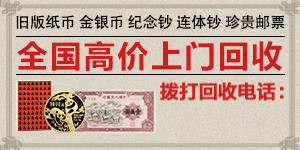大地优美而悲壮----读徐晓燕的画
徐晓燕是90年代初开始驰名于画坛的女性画家,中国画坛对女性画家一贯要求比较苛刻,只有个性风格鲜明者方能受到承认与评价。记得1993年12月徐晓燕的油画作品《城苑》在中国美术馆亮相于“第三届中国油画年展”时,人们发现,这是一位有才气、有个性、有思考和有追求的女画家。她的画是普通的城郊菜地,不厌其烦地描绘蔬菜园地茂盛和繁密的景象,画面取景独特,笔法严谨而大气,色彩浓郁而富有激情。那算是她在北京初露锋芒吧!虽然在这之前她的作品怀多次参加各种类型的展览会并有获奖的阶段。对她来说,这固然是艺术实践和探索的结果,也是艺术视野不断拓展,以艺术本质有比较深入的思考所促成的。 徐晓燕是文革之后考入大学美术系不同画专业的,毕业后,面临着国家拨乱反正和“改革开放”的大好形势,她开始用自己学到的传统艺术技巧进行创作,但很快遇到了“85新潮”的挑战,在艺术上颇为敏感的徐晓燕,呼吸着周围散发出来的创新空气,在实践上也有新的探索,不满旧有创作模式而度图走出新路,对一味求新的浪潮有所保留而不愿盲目随从,可以说是她80年代上半期的矛盾心态。其实,当时西方的艺术高峰状态时,有悠久艺术传统的欧州人却因对绘画的眷念头而掀起一股“复归”的思潮,走在这股潮流前面的是一群德国青年画家一新表现实主义者伊门多夫、巴塞利茨和安塞姆?基佛等人。在意大利与这股思潮相呼应的是“超前卫”绘画。欧洲的艺术家们重新燃起20世纪初现代世随机应变创新的热情,讲究绘画事言的形式美感,用以表达对现代社会的感受,这股清新的风气在整个西方传播,也不可避免地影响着中国画坛,影响着中国艺术家们的思考。在国内,激进的“85新潮”在完成了自己的先锋角色之的逐渐沉寂下来,正常状态的创新任务又被提到人们的议事日程。和许多富有探索精神的青年人一样,关注艺术潮流走向的徐晓燕,从这里获得有益启发, 更坚定了对绘画艺术的信心。她认真考虑如何在关注现实,表达自己主观感受的基础上发挥自己绘画的优长。这就是她创作《城苑系列》的背景。 人们在议论徐晓燕的创作时,常常提到她的画风与基弗的关系。作为观众,我相信徐晓燕是喜爱基弗绘画的,也相主她从基弗的作品中借鉴了一些观念和技巧。这是很正常的现象,就像包括基弗在内的德国新表风主义绘画借鉴了他们前辈大师的经验一样。聪明的、善于思索的、有悟性的徐晓燕,把目光投向她周围的现实和当下人们的生存状况,用自己味道受的笔触和色彩,描写她的所见所感,表达她对人与自然万物生命的思索,当《城苑系列》得到初步成功之后,徐晓燕便以更大的热情投入这一主题的发拙以及对与此相适应的语言提炼。1995年,她的油画新作《秋季风景系列?之十二》在“第三届中国油画年月日展”上获金奖,油画界的评委们高度评价这位年轻女画家的探索勇气,在油画界不少人在作品的图像形式绞尽脑汁时,徐晓燕在作品中用自己的激情表现出对自然、对生命的关注。比起《城苑系列》来,她的〈秋季风景系列〉在语言上更为单纯、凝练和整体,更重视笔触、肌理和色调的力度和韵味,自由、随意而有修养的涂抹更有表现力。不同于〈城苑〉系列的是,〈秋季风景系列〉描绘的不是田野上的茂盛与繁殖,而是萧条与荒寂。大地向人们奉献了它丰馓的果实之后,呈现出来的是一片狼籍的景象:在杂草丛生的田地里,一片处残缺不全的桔杆。大地像无私哺育子女的母亲一样,它只有奉献,不求回报。即使在被掠夺一空的情况下,它也坦然、宽厚,呈现出令人敬重的面貌。徐晓燕深谙艺术规律,她饱含着热情画出荒地、杂草和钱缺桔杆的风姿与美。她的心既为那些“被剥去果实又割下头穗的玉米殊茬,在夕阳下、在风中伫立着的桔杆、枯草”所不能平静,也为这些景象“地可言喻的美丽动人”(画家语)而激发出创造灵感,艺术创造的原理之一是切忌语言的直白与单一,否则容易流入两个极端,或主题赤裸裸的呈现,或流入纯真美的形式主义。托尔斯泰说过大意是这样的话:文学艺术是外甜内苦的药,因为它甜,人们乐意接受,而因为这苦,则有治病的功效,文艺作品是甜与苦、形式美与哲理统一体。艺术语言包含的主题“多义性”或“复合性“,寓思考、观念于可供审美的形式之中,是徐晓燕这睦作品的重要特色。 〈秋季风景系列〉标志着徐晓燕个性风格的建立,但她没有浅尝辄止,而继续向“自然——生命”主题的深处发拙。接着她又陆续奉献出〈乐土系列〉、〈大地的肌肤系列〉、〈怒放系列〉、〈辉煌系列〉以及〈月亮湾〉、〈翠桥〉、〈蝴蝶泉〉等新作。从〈乐土系列〉开始,徐晓燕从关注土地上生长物的繁荣与衰败,转而关注大地本身的状况,它被“异化”,它发生“裂变”,它“伤痕累累”,但它忍辱负重,它大气非凡,它有不可替代的辉煌。徐晓燕的画和大地有不解之缘,她把自己对大地深厚而复杂的感情融在这些作品之中,她在描写人类对大自然的践踏时,总会想到它们原有的本色,它们自身的存在价值,她用画笔“赞美”它们,带着苦涩的心情。多美好的名称——月亮湾,蝴蝶泉,翠桥……其实是臭气朴鼻、不堪入目的污水沟、垃圾坑 ,极易堵车的小桥,等等,但在画家的笔下,却是一幅幅线条蜿蜒的曲折、色彩丰富的画面。这些使她陷入深沉思考的景象,同时也激发起她的想象力和童年的加忆。她从中也体悟到许多人生的哲理,她画《怒放系列》的过程与体会充分说明一点。她从昔日自己在菜地拆摄的资料片中看到一些因生长良被废弃的小白菜的图像,追忆起她感受到的白菜生长过程,从而产生创作的冲动:“我很小心地从菜芯处画起,想象成花蕊,再一点点向外;绿色画得很浓烈,画到叶子边缘的地方自然也变成了金黄,几天下来,画面已经有了模样,她正像一朵奇异的花朵,慢慢绽放,她已经不是片子中的样子,而是她脱颖而出,呈现了她自己的美丽,我开始感动了,接一来的作画过程更像是一种跟随状态,跟随她盛开的过程,体会那种生长的感觉,我承认我从那一刻起有了一种体会,作品是有生命的,那幅作品似乎告诉了我那带着泥土的花朵,并不丑陋,而近乎完美,近乎妖艳。她卑微的出身正像她的自信一样高贵,一样迷人,一样可以登堂入室。”(徐哓东:《我的怒放》) 对人、自然、大地和自然的思考,驱使徐晓燕在绘画创作中取得成功;而创作上的成就也推动了她更深入地思考人生与艺术的许多道理,这个过程反映在她近几年的创作上,作品更有悲怆色彩,更有思想深度,更有精神内涵了。 徐晓燕从成名时就面临如何突破自我塑造的语言模式问题,十多年来她在作品内容和形式上所做的变革,都在踏实地解决这一课题,相信她在今后的历程中一定还会有新的努力,新的奉献。 2006年6月于中央美术学院 THE EARTH, S BEAUTY AND PATHOS----ON READING XU XIAOYAN, S PAINTINGS In the early 1990s, Xu Xiaoyan, a woman artist, gained nationwide renown in China’s art world, which has always been quite harsh on female painters and reluctant to recognize their reluctant to recognize their achievements in absence of an exceptionally striking style. I still remember how delighted people were to discover the talented woman artist distinguished by a strong character and a clear mind, when her “Urban Garden” series were put on display for the Second Annual Exhibition of Chinese Oil Paintings at the National Museum of Fine Arts in the December of 1993. The group of paintings depicts vegetable plots in the suburbs; the spectacles of the flourishing plants are persistently represented with original compositions, precise yet unaffected brushwork, and a rich, passionate palette. For the first time, she came into the sight of Beijing’s art critics, though her works had entered many fine art shows but received no recognition prior to the 1993exhibitions. The “Urban Garden” series marked the start of a new stage in her career as an artist. Besides years of dedicated artistic practice and explorations, Xu Xiaoyan,s success was also a result of her unceasing contemplations on the essence of art. It was in the late 1970s, when the Cultural Revolution was recently ended, that Xu Xiaoyan entered a fine art academy to study oil painting. Upon her graduation, as the reform and opening up program was unfolding across China, she started her career as a professional artist following the traditional techniques learned at school, which soon met the challenge of the “New Wave of 1985”, Thanks to her sensitivity as an artist, Xu began to explore for a new road in expressing her ideas, In the first half of 1985,hwoever, she was in a dilemma, unsatisfied with the conventional stereotypes yet unwilling to pursue novelty blindly, Actually, the fine art in the Western countries was also undergoing rapid changes back then. As the radical concepts of performance art were gaining unprecedented popularity in the US, among the Europeans there came a trend of returning to their highly diverse fine art traditions, which was led by a group of young artists from Germany, chiefly the Neo-Expressionists like Jorg Immendorff, Georg Baselitz, and Anselm Kiefer. In Italy, the trend was known as “Super Avant-Garde paintings” European artists were recovering the enthusiasm for innovation like their modernist predecessors in the early 20 th century; they began to resort to the formal beauty of their painting language to express their experiences in the modern society. Soon this breeze of new ideas blew eastward and set China’s artists rethinking their works. At the domestic front, as the “New Wave of 1985”was gradually dying down after all the sound the fury, artists were returning to their normal state of artistic creation. Xu Xiaoyan always alert to the latest development in fine arts, sensed the shape of things to come. With enhanced confidence in painting she has a serious contemplation about the representation of reality through expressing her subjective feelings. That was the background for her creation of the “Urban Garden” series. While talking about Xu Xiaoyan,s paintings, people often mention the style of Anselm Kiefer. As a spectator, I believe , I Xu Xiaoyan must like kidder’s paintings and has borrowed certain concepts and techniques from the German artist’s works, just like how Kiefer and other Neo-Expressionists has borrowed from the experiences of the artists before them. Xu Xiaoyan, an intelligent woman inclined to independent thinking, has focused on the reality in which she lives and the current state of human existence; with her favorite techniques and palette, she depicts what she sees and feels and expresses her contemplation on humanity and nature. Following the success of her “Urban Garden” series, Xu Xiaoyan plunged herself into and earnest exploration for that enduring theme. In 1995, one of her relatively new works, No.12 of “Autumn Scenery” series, was honored with the golden award at the Third Annual Exhibition of Chinese Oil Paintings, receiving high praises from the jury. As many fellow painters were racking their brains for the image patterns of their works back then, Xu Xiaoyan has already succeeded in displaying her concern for nature and life with genuine passion. Compared with the “Urban Garden” series, “Autumn Scenery” in more simple, concise, and holistic in its vocabulary, as a greater emphasis in placed on the dynamics and appeal of the brushwork, texture, and tone of colors; as a result, the spontaneous yet studied dabs become ever more expressive. Different from the “Urban Garden”, “Autumn Scenery”presents the desolation and bleakness, instead of the profusion and liveliness, of the crop fields. The earth, after yielding its abundant fruits, looks like a house just visited by a burglar, with the bare stalks swaying amidst amidst weeds To humanity, the earth is like a mother to her children, giving everything it has but expecting nothing in return .Ever after what seems an outrageous act of robbery, it still remains calm and generous, which demands genuine respect. A painting well-versed in artistic expression , Xu Xiaoyan has depicted the uncanny elegance and beauty of the wasteland, weeds, and bare stalls with earnest ardor. She found it highly disturbing to look at “the corn stalls robbed of their fruits and then beheaded as well as the weeds swaying in the wind at dusk”, and “the sense of beauty that beggars description” inspired her to take up the brush. A language that is straightforward and monotonous had no place is any kind of artistic creation because it will lead to either formalism or a blunt presentation of the theme. Leo Tolstoy once said that literature and art are like bitter medicine with sugar coating; the sweetness is necessary to make its bitterness, or its therapeutic quality, accepted by patients. The artwork should be a unified combination of bitterness and sweetness, from and content. That turns out to by one of the most prominent features of Xu Xiaoyan,s paintings, which are unfailingly the “duality” and “combination” of their themes, a quality that makes contemplation an experience of beauty. As her distinct style was formed with the birth of the “Autumn Scenery” series, Xu Xiaoyan set out for a more ambitious exploration of the theme of “nature and life”, producing the series of “Paradise”, “Skin of the Earth”, “Glory”, as well as the recent works of “Moon Bay”, “Jade Bridge”, and “Butterfly Springs”, With the “Paradise” Series, Xu Xiaoyan shifted her attention from the prosperity and decline of the plants growing on the earth to the earth itself ,which, though being “alienated”, “divided”, and “ruthlessly savaged”, still displays a spectacle of irreplaceable grandeur. Making the earth her most enduring theme, Xu Xiaoyan has invested in her paintings profound and complex feelings about the earth. While depicting the acts of violence humanity has done to the earth, she couldn’t help recalling its pristine state and value, which he celebrated in her paintings not without bitterness. The winsome titles of Moon Bay, Butterfly Springs, and Jade Bridge were bestowed on the stinking canals, heaps of garbage, and a dilapidated bridge, which, however, acquired a dazzling formal beauty once represented on Xu Xiaoyan,s canvases. For the artist, those spectacles, which often draw her into a ruminative mood, have provoked the imaginations and memories of her childhood and made her wiser about life. It has been quite spontaneous how she has created the “Blooming” series. In reviewing some video footage shot by herself in a vegetable plot, she was touched by the sight of several stunted Chinese cabbages, which gave her the impulse of artistic creation. “I started with the center of the cabbage, imaging it as a flower bud, before painting the outer leaves; the green was first very strong but soon gave way to the bright yellow at the edge of the leaves. A couple of days later, the image was almost there; it looked like an exotic flower blossoming quietly. It has shed its image in the video and found her own heauty. I was so touched; it seemed that my brush is following the process of its blossoming, to experience its growth. At that moment, it dawned on me that a painting has a life. That particular painting was telling me that the humble flower was not ugly at all. Instead, it’s almost perfect, even enchanting. Its humble origin was as noble as its fascinating confidence, which wouldn’t pale beside anything in the world”. (My Blooming by Xu Xiaoyan) The contemplations on humanity, nature, and the earth have Brought Xu Xiaoyan from ont success to another in her artistic creation, which in return drives her to further ruminations on the laws of life and art. Such a cycle has had an impact on her works in recent years, which have gained a greater quality of pathos and are becoming spiritually richer and deeper. Ever since she established herself as an artist, Xu Xiaoyan has been faced with the challenge of breaking the pattern of her own artistic language. Over the past decade or so. She has been dedicated to resolving the issue by constantly adjusting the form and content of her works. Hopefully, she will make greater progress in the future. June 2006 Central Academy of Fine Arts#p#分页标题#e#
- 上一篇: 为什么当下的国画作品“好看”不耐看?
- 下一篇: 一个女人对大地的守望----读解徐晓燕的油画










